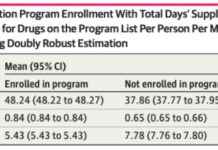Radiation from CT Scans Raises Concerns: Experts Investigate Health Risks
Over a decade of extensive research by Rebecca Smith-Bindman, a distinguished professor at the University of California-San Francisco medical school, points to a troubling reality: CT scans, a cornerstone of modern medicine, may pose cancer risks. With a fervent mission to enhance patient safety during CT scans, Smith-Bindman and her peers have spearheaded calls for federal initiatives to regulate radiation exposure more effectively.
An alarming revelation underscores the urgency of this issue: a staggering 93 million CT scans are conducted annually in the United States, as reported by IMV, a reputable medical market research firm. A majority of these scans target individuals aged 60 and above. Despite the widespread use of CT scans, there is a conspicuous lack of standardized regulations governing radiation levels. The dosages delivered during these scans exhibit considerable variability between facilities, frequently exceeding recommended thresholds.
In an impassioned statement, Smith-Bindman expressed her dismay, stating, “It’s unfathomable. We keep doing more and more CTs, and the doses keep going up.” The wide-ranging spectrum of radiation doses administered during CT scans is particularly concerning, with certain institutions demonstrating stark deviations from standard practices. Research conducted by Smith-Bindman and an international team of collaborators revealed that the magnitude of this inconsistency is even more pronounced in outlier facilities.
A pivotal study published in 2009 estimated that excessive radiation exposure from CT scans could lead to 2% of cancer cases. Ongoing research suggests that this figure might be an underestimation given the escalating frequency of CT scans in contemporary healthcare practices. Despite the relatively low individual cancer risk associated with CT scans, patients frequently undergoing multiple scans face a heightened health hazard. Radiologists emphasize the indispensable role of imaging in promptly diagnosing life-threatening conditions while expressing a need for stringent radiation safety protocols.
The Centers for Medicare & Medicaid Services (CMS) introduced new data collection guidelines in January, designed to bolster the safety and efficacy of imaging procedures. While the implementation of these regulations spans over several years, healthcare providers are expected to comply with the reporting requirements gradually. Facilities failing to adhere to these directives risk incurring financial penalties in the future.
In response to CMS’ proactive measures, Leah Binder, President, and CEO of The Leapfrog Group, a renowned hospital safety watchdog, commended the initiative. Emphasizing radiation exposure as a critical patient safety concern, Binder lauded CMS for prioritizing the regulation of CT scans. Notwithstanding these positive developments, concerns were raised by the American College of Radiology and other medical imaging entities regarding the perceived complexity and financial burden imposed by the CMS rules.
A notable development in this realm involves Alara Imaging, a key player offering complimentary software essential for complying with the new regulations. Notably, Smith-Bindman’s association with Alara Imaging underscores her commitment to advancing health technology solutions. Acknowledging the evolving landscape, the ACR expressed openness to collaborating with multiple vendors for CT dosing data collection, thereby fostering a more competitive and inclusive market environment.
Moreover, healthcare quality and safety organizations, including prominent advocates like the Institute of Healthcare Improvement, have rallied behind CMS’ reformative efforts. The longstanding debate surrounding CT dosing underscores an urgent need for comprehensive measures to mitigate radiation exposure risks. As researchers delve deeper into the intricacies of CT scan safety, the imperative to safeguard vulnerable populations, such as children and older adults, remains a top priority.
Dr. Max Wintermark, a distinguished neuroradiologist at the MD Anderson Cancer Center, underscores the significance of embracing progressive measures to enhance radiation safety in medical imaging. While lauding the potential of artificial intelligence to optimize dosing protocols, Wintermark endorses the positive impact of the new CMS regulations. These vital steps are instrumental in steering the healthcare industry towards a future characterized by minimal radiation exposure and maximum patient safety.

















